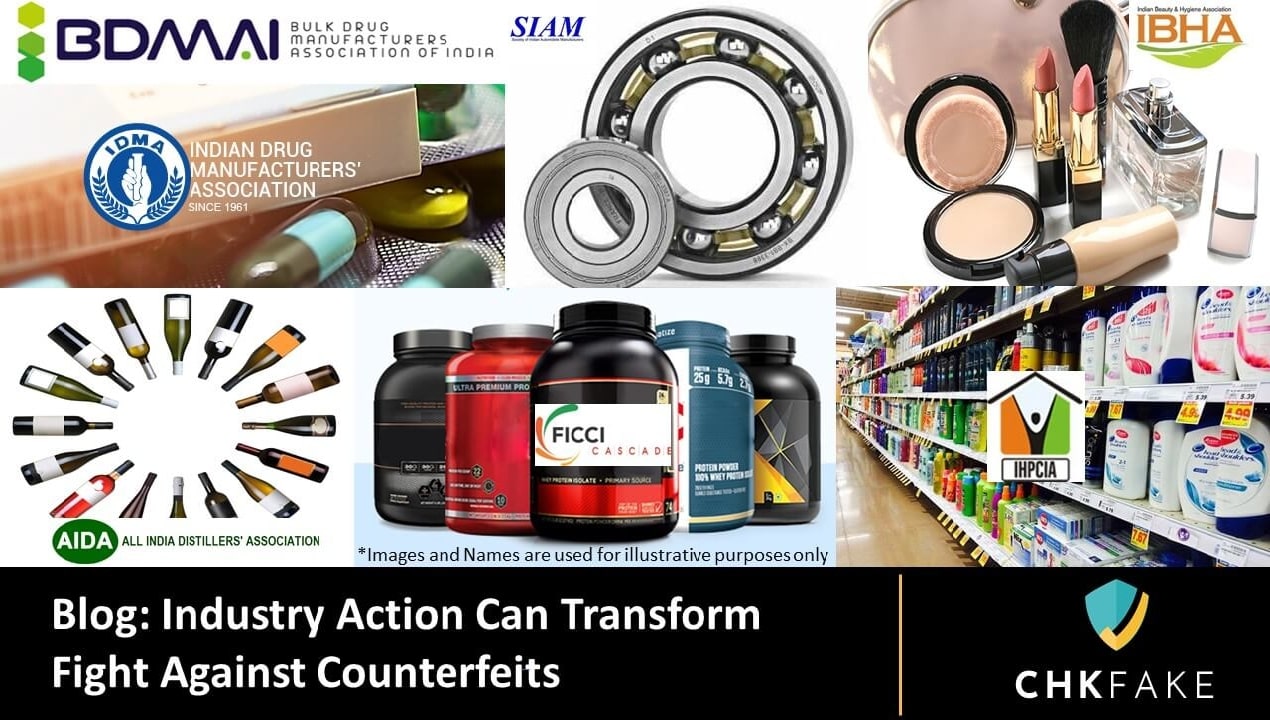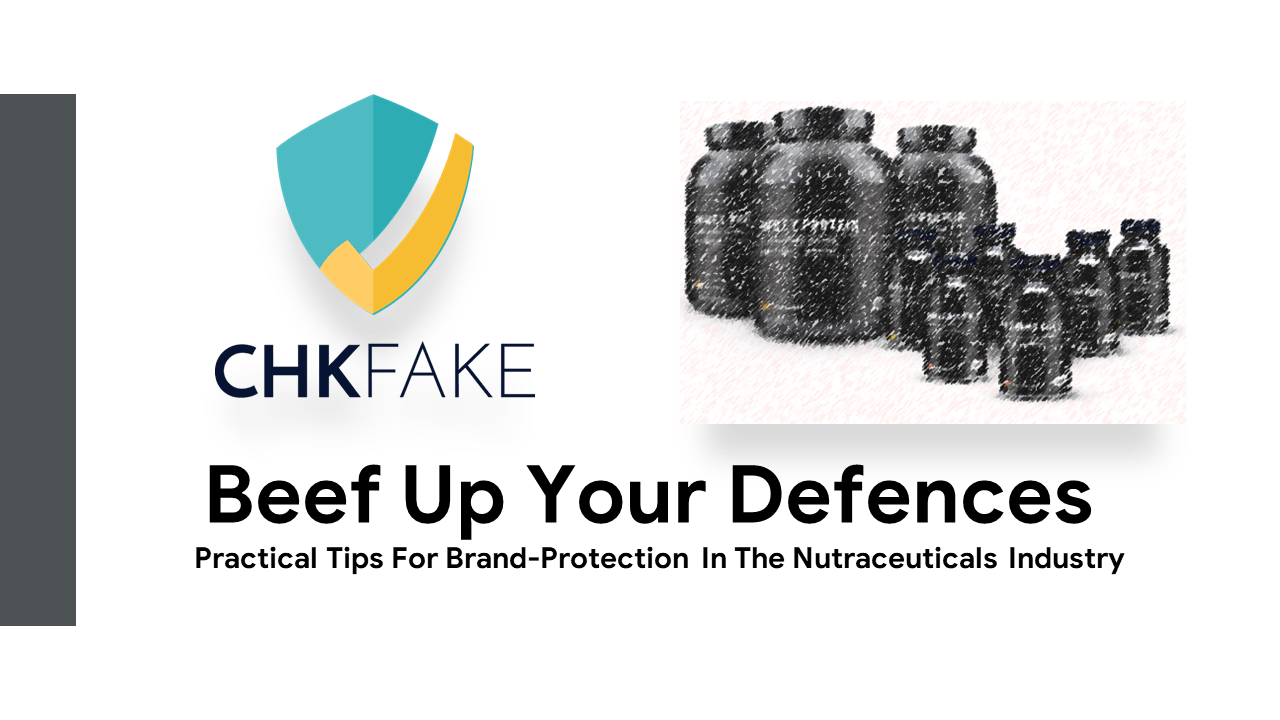ICC-BASCAP estimates the problem of counterfeits and piracy globally to be $2.2 trillion by 2022. This means that a specific brand could be losing 10-70% of its revenue, depending on its geography, product category and market share.
And yet, organisations don’t seem to take this issue as seriously as some of the other aspects of running a business, such as the next advertising campaign or R&D innovation projects or business automation projects, which (rightfully) take up a lot of CXO bandwidth.
If a brand’s revenue lost to counterfeits as per industry estimates is even in the ballpark (say conservatively 5%), we are talking about a $ 100 million brand losing $5 million a year to counterfeits. Even if there is potential to recover half of that lost revenue, it is a windfall for the topline and the bottom line.

And yet, investment proposals in brand protection don’t even get to the CFO’s desk. As a comparison, an ERP investment is typically 3-5% of annual revenue for an organization under $1 billion revenue and it pays back in 2.5 years in reduced IT costs, inventory levels and cycle time. A similar business impact could be effected by investing in brand protection initiatives at a fraction of that cost.
So why does a seemingly slam dunk initiative not get the organisational focus it deserves? Basis conversations with many industry leaders, here is a summary of some of the reasons why.
1)Skepticism about industry estimates
Global cross-industry estimates use macro indicators to estimate scale of the counterfeit problem. That makes it hard for individual companies to assess the consequent impact on their own brands. Some have noted that this type of data ‘generally doesn’t feel as relevant to them’.
While industry specific data is more relevant, it is scarce as well. Unfortunately, in the absence of any other data, the entire problem gets swept under the carpet and brand protection is reduced to reactive responses to customers complaints about fakes.

Source: go-yo.org
The leadership team should remember though that even if the data is not there, it doesn’t imply that the problem isn’t there.
2)Piecemeal options
There are 2 distinct options in the brand protection industry. There are anti-counterfeiting technology (ACT) companies who offer security features (holograms, security inks, digital authentication etc.) for products/ packaging – making it difficult for counterfeiters to copy them. Then there are investigation and legal agencies, which help brands take enforcement action such as raids/ seizures or injunctions against counterfeiters and infringers.
In an ideal world, both these approaches should be deployed in an integrated program. In our experience though, brands deploy one or the other option. Either of these is quite ineffective when implemented in isolation.

Source: valant.io
ACT features on packaging are ineffectual if customers do not know about them or if the program is not used to actively gather enforcement leads. And yet, many brands think that the job is done if they have invested in ACT features.
On the other hand, there are many brands which take an enforcement led brand protection route. However, there is no clear mechanism of generating these enforcement leads. The result is a very small catchment area from which these leads are drawn (typically customer complaints), which hardly makes a dent in the overall scale of brand counterfeiting in the market.
In both instances, the leadership team is not able to see any noticeable brand protection ‘win’.
3)ROI evidence
Many business leaders have spoken about how there is no clarity on whether any investment in brand protection actually delivers a return. Some of this criticism is legitimate, as the industry itself has not focused as much on showcasing ROI of brand protection projects. ACT companies showcase the strength of their technologies, and investigative/ legal firms focus on how effective they are in successfully effecting raids/ seizures.
It is difficult to find anyone who gives primacy to how the brand’s business is or can be impacted. Part of the reason is that it is a difficult exercise to isolate the impact of brand protection efforts on revenue. As they say, ‘success has many fathers, and failure is an orphan’!
However, advertising also had a similar issue and yet you don’t see too many brands averse to spending behind advertising for that reason. This is because the advertising eco-system has been laser-sharp in its focus to establish causality between revenue gains and advertising investment via modelling and case studies. As a result, marketers have now developed a ‘gut feel’ that ‘advertising works’. Brand protection has a long way to go in establishing a similar construct.
The current reality is that there just haven’t been any tools available that even attempt to address this issue. While there could be multiple ways in which brand protection returns can be estimated, even the most basic data on brand protection is not being captured by brands to enable that.
4)Traditional approach
In most organisations, brand protection follows a very traditional approach.

Source: trendfollowing.com
Security feature on packaging are very seldom used. Even brands which use it go for the cheapest option rather than the most effective one. As a result, the entire value chain struggles to differentiate between genuine and fake products.
- Enforcement leads are not collected systematically. Each lead lost is opportunity lost to take out a substantive source of counterfeit/ lookalike supply point.
- Due to traditional modes of managing enforcement processes (via physical documents or emails), there is little visibility of progress of individual incidents and consequently, long cycle times. An enormous amount of time is wasted by brand protection teams in just keeping track and following up on cases.
- Since there is no central repository, it is very difficult to draw out strategic insights from past leads and actions or consolidating reports for management.
What the brand protection function could do with is an upgrade. The use of data science has made a material impact on almost all parts of the organization. ERP systems have transformed organisations in reducing costs and cycle time, and increasing efficiencies. CRM systems have helped expand customer leads and wins, and increased customer loyalty. Analytics products have allowed better strategic targeting of initiatives, anticipating needs and mitigating risks.Each of these product suites force a systematic approach on organisation processes, capturing data points and automating routine tasks, freeing up organization resources for higher order thinking and decision-making.
Somehow, the data science revolution has missed the brand protection function. To some extent, this has been due to the unavailability of the right tools for the organisations to consider. Fortunately, this is now changing with Chkfake, which is focusing on end to end standardization and automation of brand protection processes, providing transparency and accountability as well as reducing overall costs to drive recovery of lost revenue to counterfeits and lookalikes.

Source: kwantu.net
With revenue and profitability challenges due to the pandemic, now is the time to find alternative sources of growth and unlock the value of the brand which is currently being stolen by counterfeiters. Investing in automation for the brand protection function is a good starting point.
________________________________________________________________________
Tanmay Jaswal is the Founder of Chkfake, a start-up that is disrupting the brand protection industry by creating an eco-system of all stakeholders to join the fight against fakes together. The Chkfake Brand Protection Platform enables brands to expand capture of counterfeit/lookalike leads, and streamline the enforcement process.
Tanmay has 27 years of global experience in business leadership, marketing and strategy in companies like Coca-Cola, Akzo Nobel and Shell and is an acknowledged authority on brand protection. He has headed the brand protection function for Shell globally and has extensive experience in this space over the last 8 years.






0 Comments